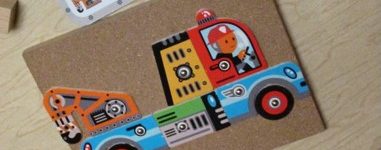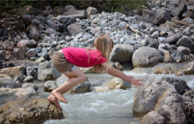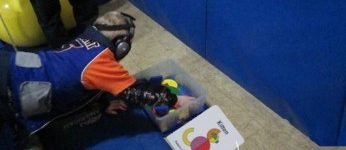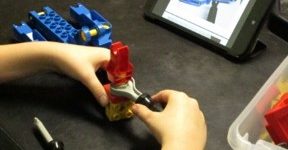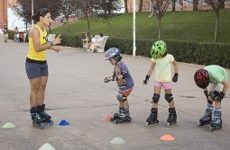Using construction puzzles to introduce whole-part relationships When we first started this activity, the parts of the animals were assembled in total disarray. While the child was able to match the colors, the sizes of the pieces were not in order to show that the dinosaur had an arch to his back, the legs of the alligator were assembled upside down, and the
Learn more
Eye hand coordination embodies the concept that visual perception (the way in which we interpret visual images) can have a profound effect upon the way we learn and move. Visual perception represents several skill sets that impact learning. One major skill set is visual discrimination, the ability to perceive an image in terms of its form, shape, color and size is a key aspect
Learn more
Functional vision – incorporates use of the visual system to identify the layout of the near, distant, and peripheral environment while orienting oneself to objects within those confines. Many children who have sensory processing disorders have difficulty with various aspects of functional vision. Visual pursuits – the ability to coordinate movements of the eye muscles in order to follow movement of an object, such
Learn more
The main idea of this Motor Maze for a child with motor planning deficits is to entice the child to integrate using visual perceptual skills with language to guide motor output. An age appropriate task card has been selected and therapeutic listening is being used to assist with attention. The first step for this youngster will be to speak up to say: The names
Learn more
Developing proficiency in hand function skills typically requires the support of two distinct sensory processing systems. While components of the visual processing system alert us to where and what the objects are that we will be working with, the sensory receptors in the joints, skin and muscles of the somatosensory system alert us to touch and movement sensations occurring as the objects are manipulated..
Learn more
Needed for handwriting, fractions, geometry, soccer, gymnastics The ability to mentally rotate and imagine objects as they translate from 2-dimensional into 3 dimensional objects is often called “space visualization” and is necessary to success in the academic classroom. Space visualization is a skill embedded in math concepts of adding, subtracting, and division of fractions. It is also embedded in geometric equations, geography, social
Learn more
Visual Motor Integration – the ability to bring visual perceptual abilities and motor control together in order to perform a motor task, is a vital skill needed for social, emotional, and academic independence. Typically, parents and teachers look to the emergence of hand function as a measure of development of this skill. Meanwhile, therapists look to the emergence of other key elements of visual
Learn more
The ability to incorporate use of both sides of the body represents acquisition of important developmental milestones. We see this first when a baby holds a bottle with both hands to drink and hold toys, next when we see the toddler using all four extremities to crawl, and later on when the toddler begins to walk. Use of both hands to work with tools
Learn more
Children who have coordination deficits also tend to grow unevenly through growth spurts. Motor patterns in need of additional support during these seasons of life include: Postural extensors of the back and neck — these muscles enable the child to maintain an erect sitting posture allowing for precision at table top work Stabilizing muscles of the shoulder and pelvic girdles — these muscles enable the
Learn more
What is Body Awareness and how does it work? Body awareness is the ability to interpret sensory information arising from joints, muscles, skin and inner ears of the body. These specialized sensory receptors are termed “somatosensory receptors”. They function by relying upon a multitude of moment to moment reactions incorporating concepts of how the body is situated in space, how the body parts are positioned,
Learn more

